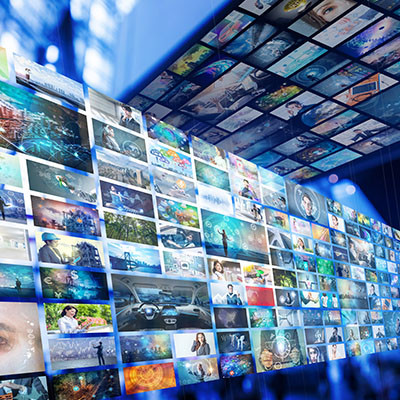JS Business Solutions Blog
Streaming is a Major Part of Modern Life—Here’s How It Works
There’s no getting away from streaming nowadays—if you’re not binging something on Netflix/Hulu/HBOmax (etc, etc), you’re listening to your favorite song on your music platform of choice. This is largely due to the rising popularity of the “as-a-service” strategy that cloud services enable nowadays. Let’s take a closer look at streaming, and why it is now so ubiquitous.
Streaming is Far Better Than It Once Was
Streaming—the continuous transmission of content over the Internet—isn’t exactly new, but I’m sure you can remember a time when trying to stream something required a lengthy wait time as this content loaded and buffered. Fortunately, we’ve passed that point, and now streaming is more or less the predominant way that we take in media—rather than storing the media ourselves in some fashion, the data is stored on a server and fed to us bit by bit.
What Makes Streaming Different from Downloading?
When you download something, you’re actively saving a complete copy of specific data on your own device, generally sourced from the Internet. Streaming is different in that you are using the Internet to access data saved elsewhere, but not saving it.
Both, however, require a quality Internet connection, or there will be issues with the quality of whatever it is they are attempting to stream. If your Internet connection can’t sustain the rate of download, you’re going to experience some buffering issues. The same can be said about cloud services—while it can be nice to have your content stored locally, accessing it online is often more efficient and convenient… provided you have Internet access.
What Technology Powers Streaming?
As you stream things from the Internet, the file is divided into packets (compressed files to be opened once they reach their destination) containing the audio and video data. How this is accomplished comes down to the provider’s preference, and is guided by the purpose and value of the streamed content.
When you’re streaming the latest season of The Umbrella Academy on Netflix, you want a quality picture and decent sound. To contrast that, a large video conference will need connectivity and real-time interaction as compared to pure quality.
Streaming services often use one of two common transfer protocols—user datagram protocol (UDP) or transmission control protocol (TCP)—based on the type of streaming taking place. TCP uses a dedicated connection between server and client to confirm all content is properly received. UDP prioritizes speed at the cost of some quality.
Considering this, the use cases of each become more clear—TCP is best when the content needs to be complete, whereas UDP is fine when some loss can be managed. Each streaming provider will go with whichever option enables them to serve their clientele best.
Hopefully, you’ve learned something new about the tools you almost certainly use every day. What else would you like to see us discuss? Let us know in the comments!




Comments